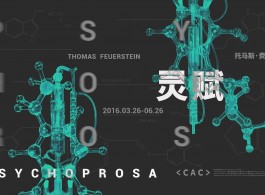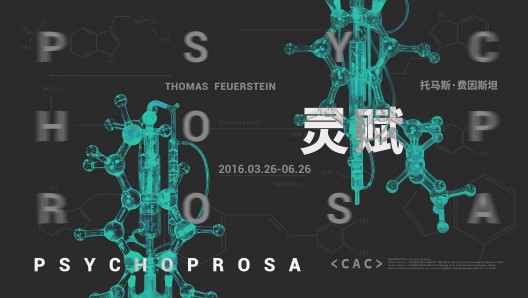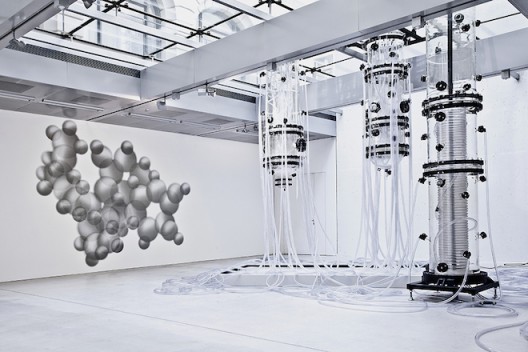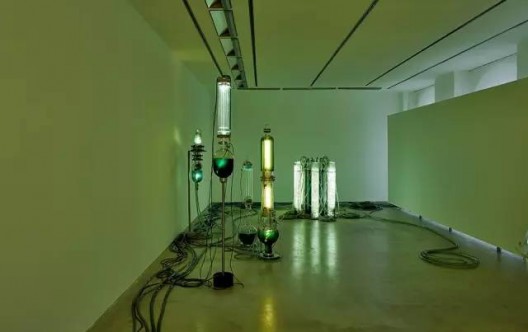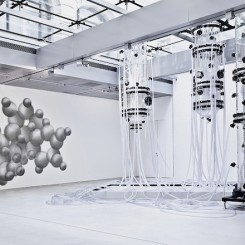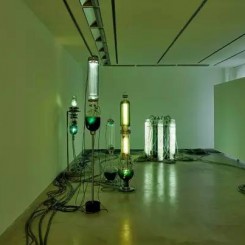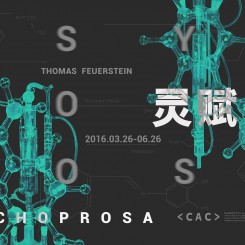“Psychoprosa”
Chronus Art Center (CAC)
Artist: Thomas Feuerstein
Duration: 2016.03.26 – 06.26
Venue: Chronus Art Center
Address: BLDG.18, No.50 Moganshan RD., Shanghai
Chronus Art Center(CAC) is pleased to present Psychoprosa, the first solo exhibition in China by the Austrian artist Thomas Feuerstein. Psychoprosa is a large installation consisted of nineteen artworks that together transform CAC’s 500 square meters gallery space into a studio reminiscent of a mysterious alchemist’s workshop while gracefully arranged akin to a tidy and ordered modern laboratory.
Thomas Feuerstein comes from Innsbruck, where he studied art history and philosophy in the 1980s and 1990s. His works in the 1990s can be characterized by an examination of the media and technological conditions under which a globalized society unfolds, before he began to investigate questions on biotechnology. His artistic starting point is one of boundary – crossing, whereby he examines the interfaces between different disciplines, directions of thought, fields of research and science, and between politics and society. In this process he wanders effortlessly among scientific facts, mythical superstition and futuristic science – fiction visions. In the exhibition Psychoprosa the artist has conceived a spectacular installation on the borderline between art and scientific experiment. He connects new groups of work, as well as earlier pieces with a similar set of themes to produce a multilayered narrative pointing to the future of a society shaped by its novel biotechnological possibilities.
The show is made up of laboratory vessels, equipment and refrigerators connected through a system of flexible tubes that transports green or colorless liquids from one stop to the next. In accordance with the appliances present in the room, Feuerstein has given the individual areas telling titles: Greenhouse, Gate, Laboratory Kitchen, Cooling Chamber and Factory. Linked by pipes, the apparatuses and objects seem like active protagonists: inside glass sculptures, substances are transformed by invisible laboratory assistants, and refrigerators open and close as if inspired by demons or ghosts. A chemical process is employed to extract a synthetic substance from algae and fungi to create the molecule psilamine, which does not yet occur in nature. The remaining biomass comprises a slimy material, which develops a viscous consistency after heating, cooling and mixing: thick threads and veils form a transparent, liquid sculpture. If we were to consume the ‘molecular sculpture’s psilamine, solid objects would deliquesce and begin to flow in our perception. In this way the psychotropic effect of the substance-which the exhibition visitor does not experience but can only imagine – is reflected in the exhibition as a real process. Crossing and confusing the borderlines between our inner and external worlds is a central aspect of Feuerstein’s Psychoprosa. The slime that permeates the entire exhibition in a real as well as a thematic sense refers, on the one hand, to horror fiction and one of its early masters, H. P. Lovecraft (1890–1937); on the other hand it highlights – as a social metaphor – questions regarding the definition of the individual and the dissolution of social boundaries.
On the “L” shaped wall next to the exhibition entrance is mounted a series of 28 lithographic prints that unwinds parallel to the story For He’s a Jelly Goo Fellow, the literary source for the exhibition. While the drawings and the story place the formless material slime at the centre of an approach nourished by scientific, technological, psychic and animistic aspects to understand a world that is torn between a longing for nature and technologization, the entire installation which branches off into the 500 square meters exhibition space serves to demonstrate how psilamine and the slime are produced, and to display the products.The Greenhouse is dipped into an atmospheric green where the algae and fungi are cultivated in bioreactors along with hybrid sculptures anthropomorphized and personified by names such as Iuturna or Élaine, combining laboratory apparatus, sculpture, standard lamp, and futuristic house plant. The tubes containing circulating substances turn into the lines of a three – dimensional drawing as they snake their way through the exhibition space. From the Greenhouse onwards, they lead to a sculptural apparatus titled Gate, where the algae are filtered and the water needed for the slime production is processed. In the Laboratory Kitchen, viewers are then to encounter the two sculptural laboratory vessels Mrs D. and Mr P., as well as the newly extracted psilamine presented in two artworks. Baby Psi is made up of laboratory flasks and again visualizes the modular structure of psilamine, while Psiloprose sees crystalline psilamine grow out of the printwheel of a typewriter. Further on a glass table top that rests on a fictitious molecular sculpture, a bust made of silicone named Uncle Bib rattles vigorously; while its jelly – like consistency reminiscent of slime, Kalte Rinde sees Schopenhauer’s complete works infested with a slimy dry rot, appropriate to the philosopher’s conception of the world. The two final stops in the exhibition, the Cooling Chamber and the Factory, see the slime being manufactured and processed. The dimly lit Cooling Chamber contains innumerable refrigerators that hold the tinned slime. The spectacular Accademia dei Secreti which forms the conclusion and climax to the entire installation sees transparent slime being pumped through enormous glass vessels in vast quantities. The artist now introduces his audience to the “slime age”, during which humanity will protoplasmically merge to form a new collective.

